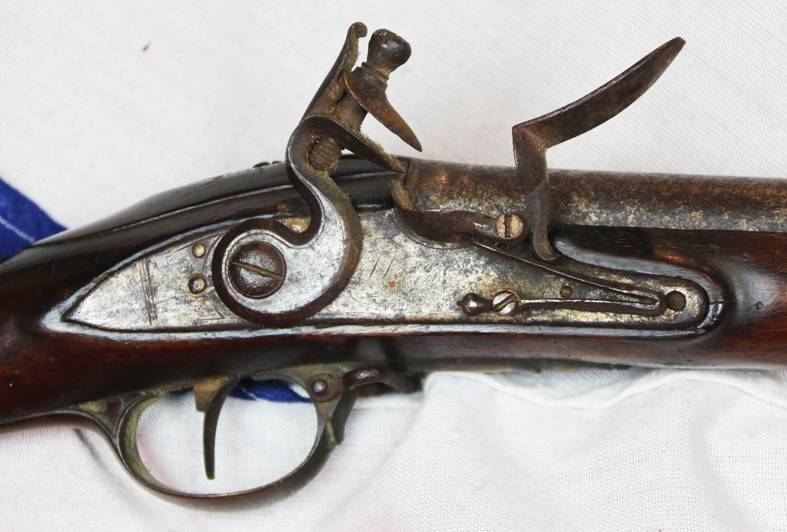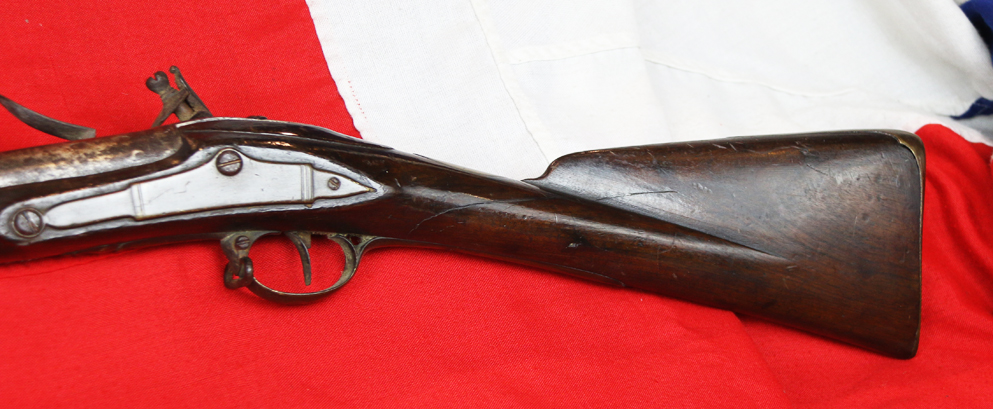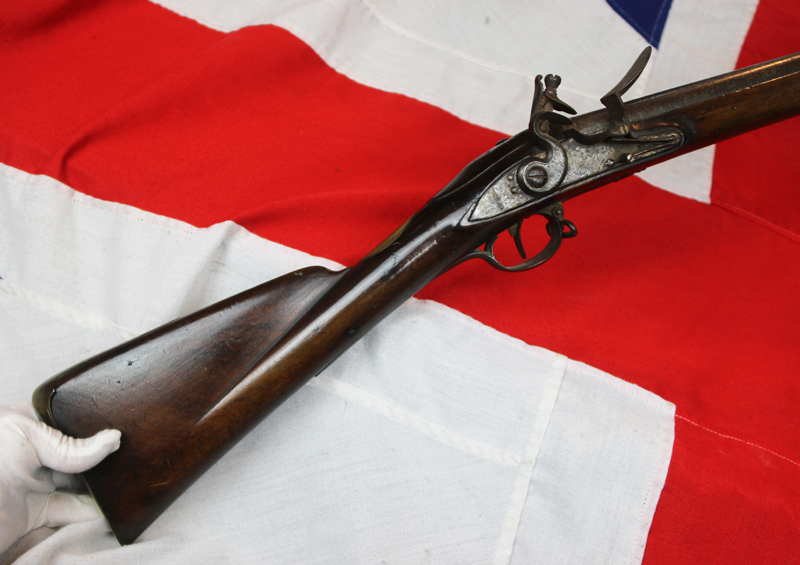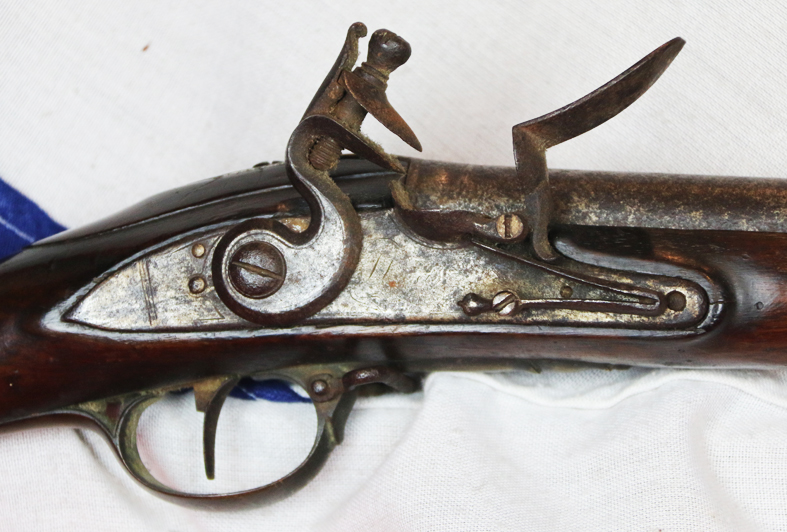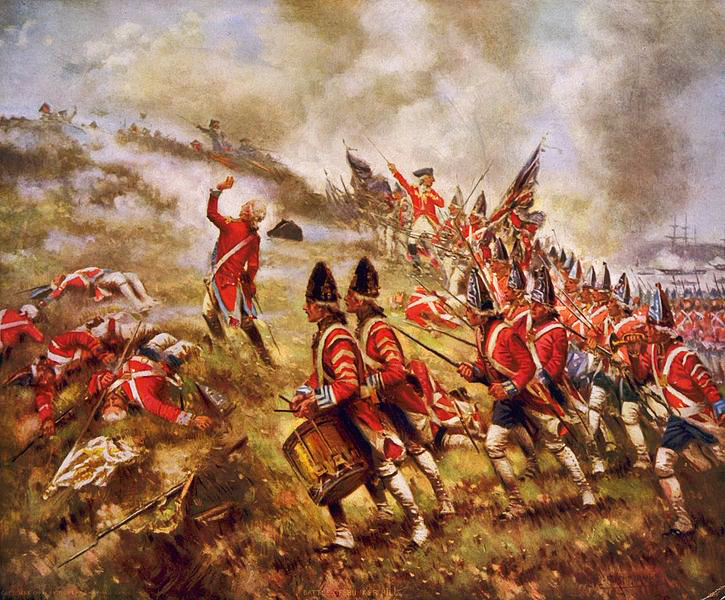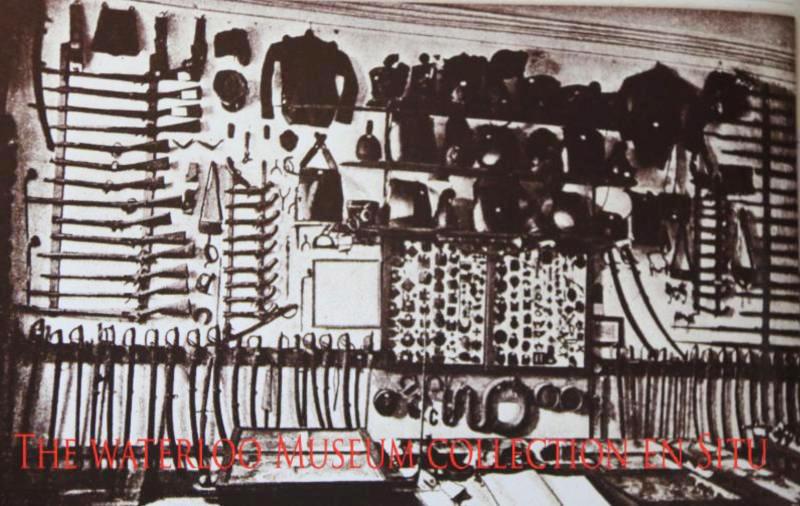A Very Good British 42" Barrel Second Pattern 'Brown Bess' Musket, Used From the Revolutionary War Until Waterloo. A Most Rare And Historical Musket From the Pantheon of the World Renown British ‘Brown Bess’ Musket.
A superb 18th century .750 inch bore, Brown Bess volunteer's musket, the pattern used from the Revolutionary War period and into the war with France. Superb walnut stock, traditional brass furniture with full side plate, two sling swivels complete. Engraved flintlock, with good sound and strong action, partly distinct naming, which could be Harvey or Hadley of London. Britain's "Brown Bess" flintlock musket is simply one of the most important military arms ever devised. Beginning its life almost 300 years ago, it created one of the greatest empires the word has ever seen and, among other achievements, made the 'British Square' the almost undefeated form of infantry defence throughout the world. Made in four distinct patterns it originally started life as a 46 inch barrel musket called the Long Land or Ist pattern Brown Bess.
Then in around 1768 the gun evolved and the barrel was shortened to 42 inches as 46 was deemed unwieldy and renamed the Short Land or 2nd pattern. Although the Long Land was made continually for another 20 years. With the onset of the Napoleonic Wars in the 1790s, the British Board of Ordnance found itself woefully short of the 250,000 muskets it would need to equip its forces. It managed to produce around 20,000 short land pattern muskets but this was simply not sufficient. At that time the British East India Company maintained it own troops and had contracted with makers to produce a simplified version of the Brown Bess musket with a 39-inch barrel and less ornate furniture and stock work. It was generally felt that the standard of these "India pattern" muskets was not up to the standard of the earlier Besses, but necessity required action so the authorities convinced Company officials to turn over their stores to the Crown.
By 1797 the urgencies of war ultimately created the demise of the Short Pattern, and all manufacture was turned to building the more simple 'India' pattern. For the most part, the gun underwent few changes from its introduction until Waterloo, with the exception of the cock, which was altered from the traditional gooseneck style to a sturdier, reinforced version in around 1809. As well as British usage, some were also carried by King George's allies, among them the Russians and Prussians. The stock has an old hairline combat service partial crack in the stock at the wrist on just the reverse side but perfectly sound.
The last photo in the gallery shows a photograph of one section of the collection in the museum of Waterloo, taken in around 1900, showing all the weapons of Waterloo en situ, including all the protagonists {British, French, Prussian and Belgian muskets, swords, pistols, armour uniforms, etc}. The museum was founded and owned by a veteran of the 7th Hussars that fought at Waterloo.
As with all our antique guns no license is required as they are all unrestricted antique collectables
Code: 23180
3450.00 GBP


